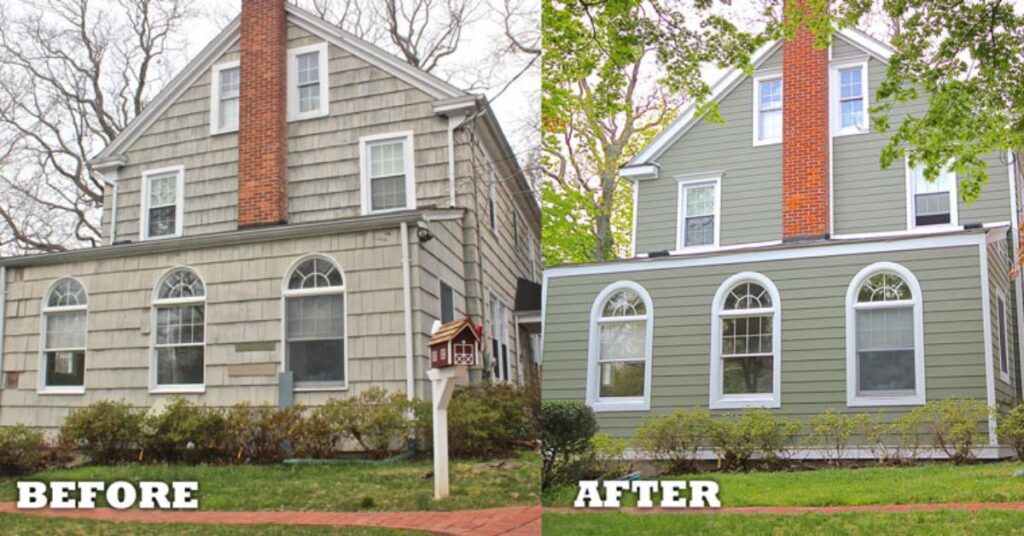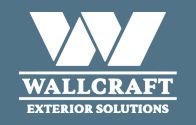Siding Replacement: 7 Signs It's Time To Replace Your House Siding

Table of Contents
Siding is your home’s first line of defense against the elements and an essential component of its curb appeal. The importance of well-maintained siding cannot be overstated. While the thought of replacing your house siding might seem daunting, it’s an infrequent but vital investment in maintaining the integrity and beauty of your home. Ignoring the need for siding replacement can lead to more costly repairs down the line. This guide will walk you through seven key signs that it’s time to replace your house siding, ensuring you make informed decisions for your home’s exterior.
How Long Does Siding Last?
The lifespan of siding varies based on its material, installation quality, and exposure to different environmental factors. Your siding is continuously tested in the diverse climate of Georgia, from humid summers to occasional harsh winters. Regular inspections can help in the early detection of issues, preventing minor problems from escalating.
For homeowners considering replacing their house siding, James Hardie® fiber cement siding is recommended. Renowned for its durability and aesthetic versatility, it outperforms vinyl siding in several aspects, making it a wise choice for homeowners looking for longevity and style.
When Should You Replace Your House Siding?
1 – Loose or Missing Siding
Loose or missing siding pieces are more than just a cosmetic problem. They signify that your home’s protective shell is compromised. In the varied Georgia weather, these vulnerabilities can quickly escalate into more severe problems, such as water damage or insulation issues. Proactively replacing your siding in such instances is crucial to maintaining your home’s structural integrity and aesthetic appeal. Additionally, new siding can enhance your home’s energy efficiency and weather resilience, providing both functional and financial benefits in the long run.
2 – Buckled, Cracked, Sagging, or Warped Siding
Buckling, cracking, sagging, or warping are unmistakable signs that your siding is failing. These visible deformities can result in leaks and reduced insulation efficiency, affecting your home’s comfort and energy bills. Replacing your house siding in such cases is not just a cosmetic upgrade but a necessary step in ensuring your home’s safety and efficiency. Quality siding materials can address these issues and offer enhanced protection against Georgia’s variable climate conditions.
3 – Rotting Siding
Rotting siding is a severe concern, often resulting from prolonged moisture exposure. If not promptly addressed, it can compromise the structural integrity of your home and lead to more extensive damage. Replacing your house siding when rot is detected is essential in preventing further deterioration. Modern siding options, like James Hardie® fiber cement siding offers improved resistance to moisture, ensuring your new siding stands up to the humid Georgia climate and remains durable for years.
4 – Finish That is Bubbling or Blistering
Bubbling or blistering finishes are clear indications of moisture problems or inadequate ventilation. These issues are more than skin deep – they can lead to structural damage and even health concerns like mold growth. Opting for siding replacement when you notice these signs allows you to revitalize the look of your home and address and rectify any underlying issues. Advanced siding solutions offer improved moisture management and ventilation, safeguarding your home against these problems.
5 – Excessive Maintenance
If siding maintenance becomes a frequent chore, it’s a sign that siding replacement may be more cost-effective. Continuous repairs and repainting indicate deeper issues that superficial fixes can’t resolve. Replacing your house siding can reduce maintenance demands and ensure lasting protection and beauty for your home. It’s a wise investment that reduces upkeep costs and enhances curb appeal.
6 – Pest Damage
Pest damage, like termite or carpenter ant infestations, can severely damage your siding, sometimes beyond repair. Replacing your siding becomes crucial in these scenarios, not only to repair the damage but also to prevent future infestations. Modern siding materials are designed with pest resistance in mind, offering you peace of mind and long-term protection.
7 – Color Fading
Significant fading of your siding’s color can signify material degradation due to prolonged exposure to the sun and elements. When fading becomes noticeable, it’s often a hint that the siding’s protective qualities are diminishing. Replacing faded siding enhances your home’s aesthetic appeal and reinstates its protective capabilities. Modern siding options have improved UV resistance, ensuring your home maintains its vibrant look for years.
Contact Wallcraft Exterior Solutions For Siding Replacement Services
Choosing to replace your house siding is a significant decision, but it’s an essential investment in maintaining your home’s safety, comfort, and beauty. At Wallcraft Exterior Solutions, we understand the importance of quality siding and provide expert services to meet your needs. With our experienced team, we ensure that your siding replacement is not just a quick fix but a lasting enhancement to your home. Don’t wait for minor issues to become major problems. Contact Wallcraft Exterior Solutions today for a consultation on siding replacement and take the first step towards revitalizing your home’s exterior.
FAQ About James Hardie Board Fiber Cement Siding
James Hardie siding is often considered superior to vinyl siding due to its durability, fire resistance, aesthetic versatility, and ability to withstand extreme weather conditions. While it may be more expensive initially, its long-term benefits often outweigh the cost difference.
The primary downside of James Hardie siding is its higher upfront cost compared to vinyl siding. It also requires professional installation due to its weight and the specific techniques needed for installation. Regular painting and maintenance are also needed to keep it in top condition.
Yes, you can replace vinyl siding with Hardie board. Many homeowners choose to upgrade to Hardie board for its enhanced durability and aesthetic appeal. It’s important to have a professional assess your home’s structure to ensure it can support the weight of the Hardie board, as it is heavier than vinyl siding.
For many homeowners, Hardie siding is worth the investment. Its longevity, resistance to fire and weather, and the aesthetic value it adds to a home make it a cost-effective choice in the long run. Additionally, it can increase the resale value of your home.
Vinyl siding is generally cheaper than HardiePlank in terms of initial cost. However, considering the longevity and durability of HardiePlank, the long-term cost can be comparable or even lower than that of vinyl siding when factoring in maintenance and replacement costs.
Hardie board is highly resistant to mold and mildew growth due to its composition. Unlike wood or certain other siding materials, it does not retain moisture, which helps prevent mold growth. However, like all exterior home materials, proper installation and maintenance are key to preventing mold and other issues.
